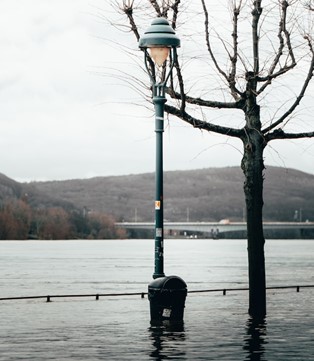Moner Attwa has been leading private sector growth in companies that support the Department of Defense and other Federal Government agencies for over 15 years. In the following article, Moner Attwa discusses global warming, its effects, and how coastal communities are affected.
As sea levels rise due to a warming planet, communities across the United States are facing increasingly severe storms and near-constant flooding. Scientists predict that increased rainfalls and more intense hurricanes are here to stay if global conditions remain on course, so residents must learn to adapt and prepare for the severe weather ahead. This article will explore the impact of rising sea levels on coastal communities.
Moner Attwa Explains the Overall Impact
The United States Environmental Protection Agency (EPA) notes that changing sea levels are beginning to have significant effects on human activities in coastal communities on all sides of the country. Salt water will begin to increase its flow into estuaries and groundwater aquifers, and the sea will erode shorelines, overwhelm dry land and low-lying wetlands, and generally contribute to more coastal flooding. While the
effects can sometimes seem minor, over time, and especially in the case of major storms, they can prove to be disastrous.
Infrastructure
According to the EPA, rising sea levels make the nation's infrastructure more vulnerable to storm damage which will impact a disproportionate number of citizens, as coastal communities tend to be highly populated. In fact, while the coastline makes up only 10% of the contiguous United States, 40% of the population resides there.
Moner Attwa says that more than $1 trillion in property lies within 700 feet of the U.S. coast, so the impact of rising sea levels could be particularly devastating to the nation's overall infrastructure with so much property at risk of becoming uninhabitable or totally destroyed. The U.S. coastal floodplains also boast more than 60,000 miles of bridges and roads, all of which are at risk of damage and destruction by storms and flooding. Not to mention the coasts are the home to many military bases, airports, oil refineries, and power plants that service communities across the country.
Economy
Loss of property directly impacts the local and national economy by lowering tax revenues, shuttering businesses that generated income and brought in tourists, and diverting resources from public services that would be constantly dispatched to rescue, repair, and restore.
Moner Attwa explains that coastal communities provide more than 58 million jobs in tourism, fishing, and other related industries, and produce more than $9.5 trillion in services and goods annually. All of this is at risk of being wiped out by rising waters.
Culture
In the short term, destruction of coastal infrastructure can impact people's ability to travel to work or school, receive medical care, and obtain supplies, wreaking havoc on everyday routines. In the long term, as sea levels rise, communities may begin to flee coastal areas, selling or abandoning homes and businesses that are in danger of destruction. Coastal communities may no longer be the centuries-old go-to for local leisure and vacation, causing the culture to shift as people look for new fun traditions.
Moner Attwa says that increased storms can also have a psychological and emotional impact on both individuals and entire communities, causing increased fear and anxiety for all. The loss of a home or business due to flooding or storm damage can also have mental health impacts, even going so far as to cause post-traumatic stress disorder.
 Communities
Communities
Climate change is expected to have a more pronounced impact on marginalized communities and the socially vulnerable population, such as people of color, lower economic classes, the elderly, and Indigenous communities. The immense flooding of 2005's Hurricane Katrina, which inappropriately endangered and harmed the elderly and Black populations of New Orleans, is a prime example.
Moner Attwa says that such populations may be less able or willing to follow evacuation orders due to economic limitations, poor health, mistrust of institutions, or language barriers. Infrastructure reinforcements may be prioritized in higher income and/or less rural areas of residence. While Indigenous tribes throughout the U.S. are highly attuned to climate change, and many are actively preparing to adapt (as they have done historically), they may also face institutional and resource barriers that could make this far more challenging.
Adaptation Strategies in a Changing Environment
The EPA recommends several courses of action for individuals, organizations, and communities to prepare for rising sea levels, including:
- Work with nature to develop natural protections like green spaces, natural shorelines, and sand dunes.
- Involve diverse communities to make sure everyone is educated and included in future planning.
- Identify risks both immediate and long-term to create a plan of action.
- Learn about your local flood risk and contact your insurance company to understand how you are protected.
- Protect wetlands by supporting local environmental organizations and cleanups.
In Conclusion
Rising sea levels can have a disastrous impact on coastal communities, wreaking havoc on our nation's infrastructure, economy, and culture. Moner Attwa says that by educating communities and devising local action plans, people can start to prepare for challenging times ahead.
 Communities
Communities